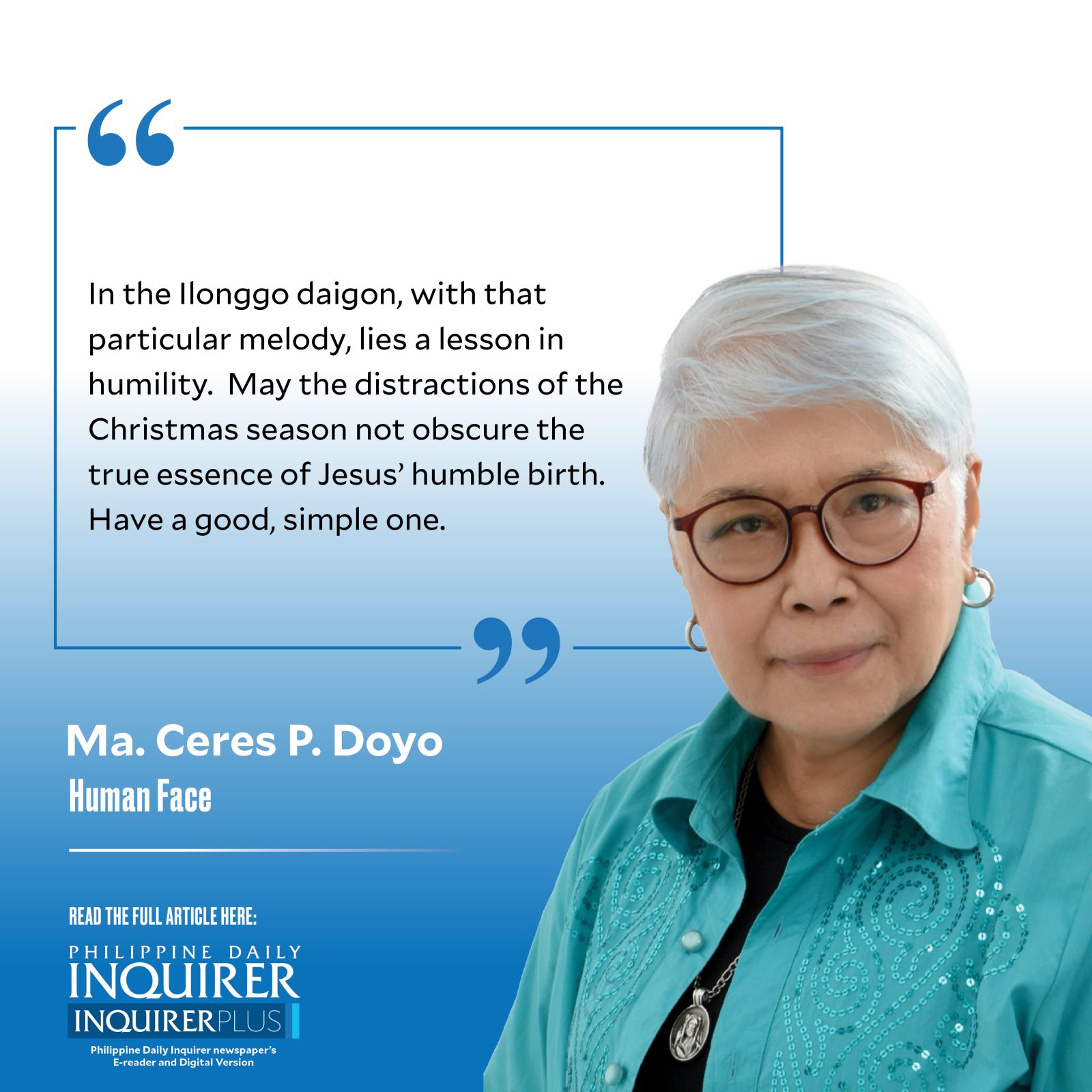‘Daigon’ in Christmas memories
When in the stillness of the night there would be a sudden burst of musical “pasakalye” (introduction) like no other, I knew the carolers had come and were about to begin their previously announced “daigon” or caroling. Theirs was not a random choosing of where to carol, they picked homes they knew would give them “room” to share. Ours was among them. Oh, it was special, with brass band, guitars, and voices so raw, they sounded like they were straight out of the open fields groaning with grain. I would not get up to watch them because I wanted to just listen as if it was all in a dream, as if any physical movement on my part would disturb the magic of it, because at the end, I wanted to drift off to sleep as if on a cloud on its way to a distant Christmas star. A childhood Christmas reverie like no other.
Looking back now, I think this was the same town band that accompanied many townsfolk to their final resting places, the same band members who played in the barrio “bailehan” (community dance), though not quite Glenn Miller style. It might have been the same marching band that made the rounds at dawn to signal the start of our town’s five-day fiesta in May. We called this “diana” (as mentioned in Jose Rizal’s “Noli Me Tangere”), some kind of rousing reveille.
Article continues after this advertisementFor the carol pasakalye, the strumming of the guitars would be heard followed by the tuba’s bop, bop, bop. And the singing would begin. “O Senyor tagbalay,” (Oh, Lord of the house), “lunsay nga dungganon/ Bisan pa mahamuok ang inyong katulugon/ Pagmata kamo anay kag kami ay gawahon/Mag-asawang pobre nga yari sa silong.” (O ye honorables, rise from your deep sleep because a poor couple is here below, waiting.)
It is Joseph pleading because his spouse Mary is heavy with child and she is about to give birth. The lyrics remind me of the “panunuluyan” of the Tagalog-speaking region, the search for a room in the inn where there is no more. I googled the daigon lyrics (nine stanzas) and found them adhering to the biblical narrative about Jesus’ birth, the coming of the Three Wise Men, the shepherds, the angels, but with a heart-tugging Ilonggo (Hiligaynon) twist to it.
Joseph imploring: “O Senyor tagbalay, inyo kami hangpon/Bisan si Maria lang inyo pasakaon/Kay ako sing akon yari lang sa silong/Magbatas sang tun-og ining lawas naton.” (Have a heart, take even Mary only, I will bear the coldness of the dew here below.) The Senyor tagbalay loses no time and then kindly points them to a “kamalig,” a “kwadra.” He does not seem like the proverbial heartless innkeeper. He tells the couple to hurry because … And so Jesus is born and then the rest of the Nativity story unfolds in the daigon.
Article continues after this advertisementA few more carols and someone would call out, “Maayong, gab-i, Doc.” The envelope would be handed to the daigon leader and the group would be off to other homes that would receive them.
I searched on YouTube for the many ways this daigon has been sung and I found several renditions, some quite polished and fit for the concert stage. But the ones I enjoyed were the street-corner videos with old and young singers banging on improvised instruments and singing with their talking voices, throaty, guttural, like the church “cantoras” of yesteryears whose voices I found annoying when I was a kid. Suddenly, I found that kind of singing beautiful, because unpolished. Because that was how I first heard the daigon long ago, in my hometown that is Dumangas, Iloilo (where almost everybody’s family names begin with a “D”—Drilon, Defensor, Doronila, Deriada, Demetillio, Derayunan, Doromal, Duremdes, Doyo, etc.) And I sensed myself breaking into a grin.
If I may segue a bit, the daigon, which tells about the search for a room in the inn, Jesus’ birth, and what happened after, probably belongs to the “cancion” (Spanish for song) genre which I heard from our household help and the neighbors’, too, when I was a child. I was fascinated by the lyrics because they told a story and seemed to be always in a minor key. The last time I heard a cancion was when I was covering the famine in Negros Occidental where the “sacadas” sang their canciones to us journalists. (I quoted lines for the article that I wrote for Mr.&Ms. magazine.) Their versions were politically laden but like most canciones, they also began with “O mga senyores.” A stab at the conscience of the high and mighty.
In the Ilonggo daigon, with that particular melody, lies a lesson in humility. May the distractions of the Christmas season not obscure the true essence of Jesus’ humble birth. Have a good, simple one.
—————-
Send feedback to cerespd@gmail.com

















